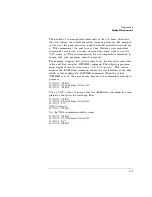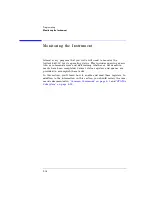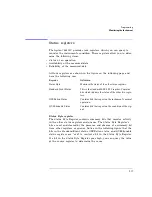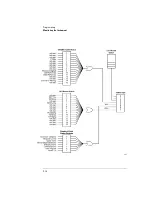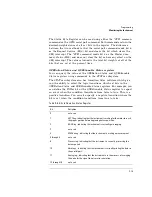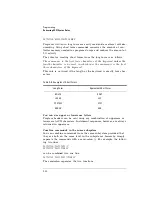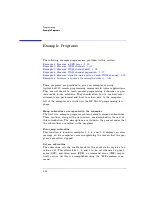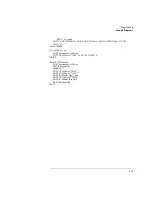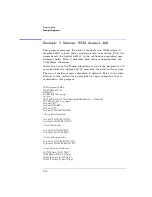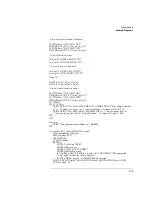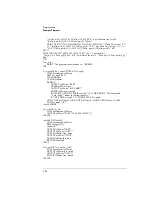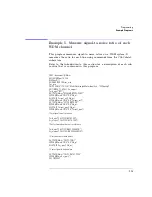
3-27
Programming
Reviewing SCPI Syntax Rules
Program message terminator
The string of instructions sent to the instrument are executed after the
instruction terminator is received. The terminator may be either a
new- line (NL) character, the End- Or- Identify (EOI) line asserted, or a
combination of the two. All three ways are equivalent. Asserting the
EOI sets the EOI control line low on the last byte of the data message.
The NL character is an ASCII linefeed (decimal 10). The NL terminator
has the same function as an EOS (End Of String) and EOT (End Of
Text) terminator.
Querying data
Data is requested from the instrument using a query. Queries can be
used to find out how the instrument is currently configured. They are
also used to get results of measurements made by the instrument, with
the query actually activating the measurement. String responses are
returned as upper- case letters.
Queries usually take the form of a command followed by a question
mark (?). After receiving a query, the instrument places the answer in
its outp ut queue. The answer remains in the outp ut queue until it is
read or another command is issued. For example, the query
OUTPUT 720;”:CALCULATE2:POINTS?”
p laces the number of p oints in the data set in the outp ut queue. In HP
BASIC, the controller inp ut statement:
ENTER 720;Range
passes the value across the bus to the controller and places it in the
variable Range. A newline character is appended to the response.
Sending another command or query before reading the result of a
query causes the outp ut queue to be cleared and the current resp onse
to be lost. This also generates an error in the error queue.
The outp ut of the instrument may be numeric or character data
depending on what is queried. Refer to the specific commands for the
formats and types of data returned from queries.
You can send multip le queries to the instrument within a single p ro-
gram message, but you must also read them back within a single p ro-
gram message. This can be accomp lished by either reading them back
into a string variable or into multip le numeric variables. When you
read the result of multip le queries into string variables, each resp onse
is separated by a semicolon.
Summary of Contents for 86120C
Page 12: ......
Page 26: ...1 14 Getting Started Returning the Instrument for Service ...
Page 27: ...1 15 Getting Started Returning the Instrument for Service ...
Page 28: ......
Page 96: ...3 18 Programming Monitoring the Instrument ...
Page 128: ...3 50 Programming Lists of Commands ...
Page 236: ...4 108 Programming Commands UNIT Subsystem ...
Page 248: ......
Page 264: ...6 16 Specifications and Regulatory Information Product Overview ...
Page 269: ...7 5 Reference Menu Maps Appl s Menu ...
Page 271: ...7 7 Reference Menu Maps Display List by WL Menu Delta On Menu ...
Page 273: ...7 9 Reference Menu Maps System Print Menu ...
Page 274: ...7 10 Reference Menu Maps System Setup Menu ...
Page 284: ......
Page 292: ......
Page 293: ......

